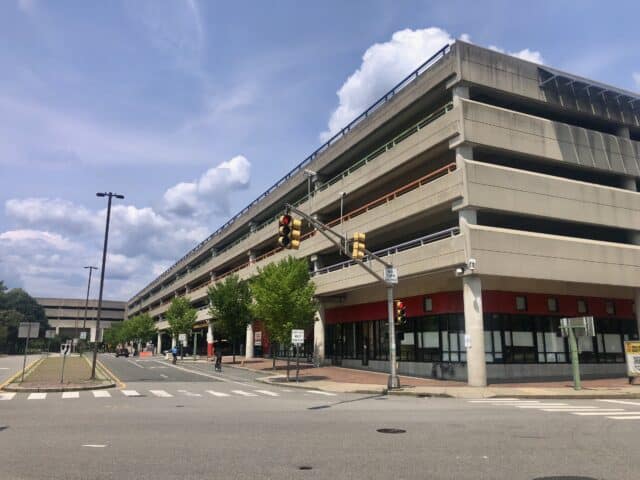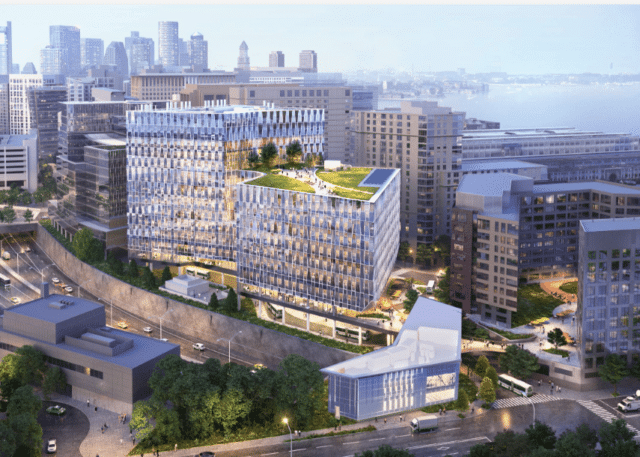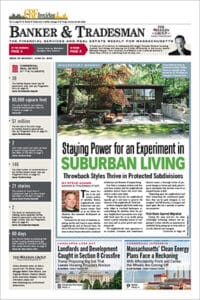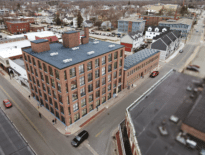
An MBTA Red Line train leaves Harvard Square station. The agency is eying the line's northern terminus at Alewife for new development. iStock photo
The MBTA owns prime locations for real estate development but efforts to build housing, offices and labs on them have a history of lengthy delays and missed opportunities.
The fatal flaw in the current set-up: selecting developers based upon high-priced offers that bet on a hot real estate category such as life science, which subsequently hits a market downturn. Developers are then unable to obtain financing, and projects can languish for years.
“The big dollar value that wins the [request for proposals] is the reason it doesn’t get built,” said Mark Rosenshein, a consultant who advises developers on projects including publicly-owned property dispositions.
As it prepares to offer high-profile sites in Boston, Cambridge, Quincy and Woburn to private developers, MBTA officials are proposing a new model that would streamline the process to remove market risk.
Alewife station in Cambridge, JFK/UMass and Andrew stations in Boston, the Anderson Regional Transportation Center in Woburn and Quincy Center are the first station properties that will be offered for the MBTA’s new joint development model, according to a recent presentation to the agency’s board of directors.
The new development model would require changes to state procurement laws to enable the MBTA and developer to share risk and develop designs and prices in stages rather than at the very beginning of a project.
“They are going to have to figure out in the future: ‘What is the inherent value of the development rights?’ without putting it out to bid,” said Rosenshein, a partner at Boston-based owner project managers and development consultants Trademark Partners. “It will require some collaboration with the Legislature, but they have vetted it enough that they believe it is feasible and will be compliant.”

Building mixed-income multifamily housing at Alewife station in Cambridge should be a top priority as the MBTA offers the property to private developers, a city councilor says. Photo by Steve Adams | Banker & Tradesman Staff
Housing a ‘Desired Use’ at Alewife Station
The Alewife Red Line station and 2,700-space garage sits next to a neighborhood that’s attracted Cambridge’s largest commercial real estate investment this decade outside of Kendall Square.
The MBTA has scheduled a public forum at 1 p.m. on Aug. 8 at the state Transportation Building in Boston to provide details on the new real estate disposition process, starting with the Alewife property.”
Approximately 2,000 apartments were completed on Cambridgepark Drive in the past decade. Life science developer Healthpeak spent $1.9 billion in 2020 and 2021 to acquire properties in Alewife and the nearby Quadrangle industrial district.
The station area includes five MBTA-owned properties totaling over 8 acres, according to city property records. MBTA Chief of Transit-Oriented Development Scott Bosworth told MBTA board members a public-private partnership would enable the agency to offset a $175 million liability at the garage, which has been plagued by structural problems. The agency went so far as to shutter the garage for emergency repairs five years ago.
Cambridge City Councilor Patricia Nolan said the first priority for any redevelopment should be housing production.
“Given that it’s literally right next-door to a T stop, the desired use is absolutely residential with a strong affordable component and a mix of market-rate,” said Nolan, who led the charge on a 2022 moratorium on lab development in the neighborhood in response to Healthpeak’s acquisitions.
A redevelopment including addition of a commuter rail station would offset the additional traffic created by housing and eventual lab development, Nolan added.
According to information provided by the city of Cambridge, the existing zoning for the Alewife station property allows base building heights up to 85 feet, with maximum heights of 125 feet for residential uses.

The MBTA’s huge Anderson Regional Transportation Center property could be a promising site for multifamily development given its proximity to transit, Interstate 93 and the retail and job hubs in Woburn and Burlington. Photo by James Sanna | Banker & Tradesman Staff
Anderson Part of MBTA Communities Proposal
The MBTA has notified Woburn officials of its plans to seek developers for a portion of its Anderson Regional Transportation Center, which spans approximately 34 acres including a large surface parking lot. The station includes a Lowell line commuter rail station, Amtrak service and Park and Ride shuttles to Logan International Airport and could play a key role in any potential future effort to improve nearly-nonexistent local public transit along the Route 128 corridor, transit advocates say.
Woburn Mayor Michael Concannon declined to be interviewed about the MBTA’s plans. In a May presentation to the Woburn City Council, Concannon said the project could align with the city’s proposal to rezone a half-mile radius on the eastern side of the railroad tracks to comply with the MBTA Communities Act.
Under the 2021 state law, Woburn is required to zone for by-right construction of 2,631 multifamily units within a half-mile radius of transit stops.
Woburn Planning Director John Cashell told councilors the proposed overlay district spans 55 acres including the station property and commercial-industrial properties along Commerce Way.
The council scheduled a public hearing on the MBTA communities overlay zoning amendment for Aug. 6.
Developers have completed several major apartment projects along the Commerce Way corridor in recent years, including Toll Brothers’ 289-unit Emblem 120 complex near Anderson station and the 350-unit Avalon Woburn at the Woburn Village retail property.
Michael Ogasapian, a vice president at Wayland brokerage R.W. Holmes Commercial Real Estate, said the Anderson RTC property would be a “tremendous opportunity” for multifamily development because of the site’s proximity to transit, Interstate 93 and retail centers.
“I would be shocked if it weren’t [proposed for] multifamily,” Ogasapian said.
A Woburn Chamber of Commerce director, Ogasapian echoed concerns of some city councilors that the MBTA Communities rezoning could result in housing displacing commercial-industrial properties along Commerce Way.
“Anderson RTC could be built upon to satisfy that [multifamily] demand, as opposed to some of the industrial product that has lasted through multiple cycles and has had tremendous staying power,” he said.

Lincoln Property Co.’s planned Seaport Circle lab development over the Silver Line Way transit stop was forced to seek a two-year extension and restructuring of its $123 million ground lease deal in January after the lab market slumped. Image courtesy of Arrowstreet and Moody Nolan
A Growing List of Stalled Projects
In recent years, state agencies including the MBTA and Massachusetts Department of Transportation have offered a series of publicly-owned parcels to private developers for redevelopment.
Despite many of the sites’ prime locations in downtown Boston, progress has been delayed by the legal requirements associated with public dispositions and shifts in real estate market demand.
State officials first invited private developers to bid on development rights above South Station’s rail platforms in 1989. The project went through several changes of developers before Houston-based developer Hines began construction of its $870 million office-condominium tower in 2020.
Developers’ price offers weigh heavily in state agencies’ selection criteria, but market conditions can shift rapidly and delay financing.
In 2020, Massport selected Lincoln Property Co. to build a 650,000-square-foot office-lab tower on its 701 Congress St. property in the Seaport District. But groundbreaking has been delayed by the lab leasing slump, and Massport in January amended the $123 million ground lease terms and gave Lincoln Property a two-year extension to close on the transaction.

Steve Adams
Risks for developers tend to be higher on MBTA- and MassDOT-owned properties because of the time needed to complete complex engineering designs and work around existing road and rail infrastructure, Trademark Partners’ Rosenshein said. That leaves projects vulnerable to shifts in market demand over time.
But a new procurement model that allows pricing to be negotiated closer to groundbreaking would reduce risk, Rosenshein said.
“Presumably, it’s a rolling process where there would be a development agreement that would take it through engineering and permitting, and a phase for a development agreement and construction,” he said.







